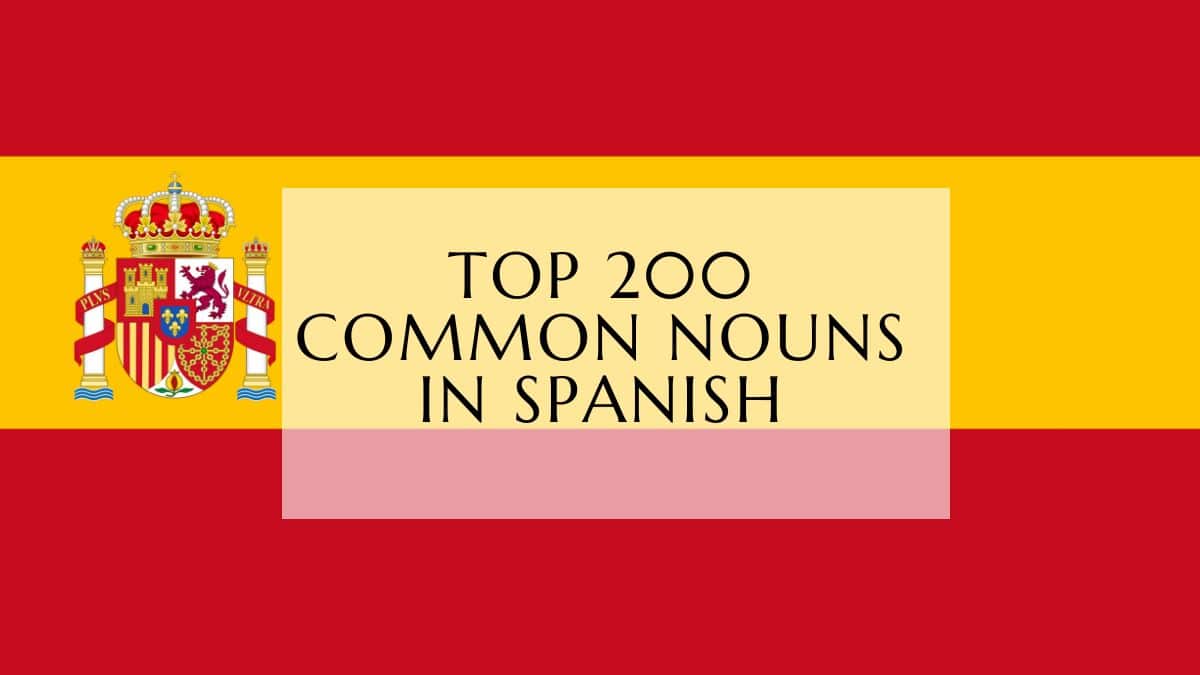Introduction:
Howdy, language enthusiasts and culture aficionados! Welcome to a linguistic journey through the vibrant world of the Spanish language!
Ever caught yourself daydreaming about conquering new frontiers of communication while sipping your morning coffee? Well, amigos, get ready to embark on an adventure that’s as exciting as finding the perfect guacamole recipe!
In this article, we’re diving deep into the fascinating depths of Spanish, from its sizzling history to its contemporary coolness. So, grab your sombrero and join us as we salsa our way through the nuances, quirks, and undeniable charm of Español!
Key takeaways:
- Spanish: A Global Force: With over 580 million speakers worldwide, Spanish is a powerhouse language with significant cultural, economic, and social influence.
- Diverse Dialects: From the streets of Madrid to the bustling cities of Latin America, Spanish exhibits rich regional variation in vocabulary, pronunciation, and grammar.
- Accessible Learning: Despite its challenges, learning Spanish offers numerous benefits, from cognitive stimulation to enhanced global communication and cultural appreciation.
- Technological Impact: In the digital age, technology plays a vital role in the spread and evolution of Spanish, providing new avenues for learning, communication, and cultural exchange.
- Preservation and Growth: Efforts to preserve and promote Spanish continue to thrive, ensuring its continued growth and relevance in an ever-changing world.
History and Origin of Spanish
Early Development
The origins of Spanish can be traced back to the ancient Roman Empire and its language, Latin. As Roman legions expanded their territories across Europe, Latin served as the lingua franca of administration, trade, and culture. Along the way, Latin interacted with the diverse languages and dialects of the regions it encountered, undergoing a process of transformation and adaptation.
This interaction between Latin and local languages resulted in a gradual evolution, giving rise to a family of languages known as the Romance languages. Spanish, along with Italian, French, Portuguese, and others, emerged from this fusion of Latin with the indigenous languages of the Roman Empire’s provinces.
The process of linguistic evolution was not uniform across regions, with different dialects and variations emerging over time. However, the foundational influence of Latin remained strong, providing the structural framework and vocabulary base for the development of Spanish.
Through centuries of cultural exchange, conquest, and migration, Spanish continued to evolve, absorbing influences from Arabic, Germanic languages, and indigenous languages of the Americas. This rich tapestry of linguistic history forms the foundation of modern Spanish, a language that bears the legacy of its ancient ancestor while embracing the diversity of its global influence.
Influence of Latin
Latin’s imprint on Spanish is indelible, shaping the very essence of the language. From its lexicon to its syntax, Spanish bears the unmistakable influence of its Latin forebear. Many words in Spanish find their origins in Latin, with a plethora of cognates that bridge the linguistic gap between the ancient world and the present.
Spread through Colonization
The Age of Exploration catapulted Spanish into new frontiers, as intrepid explorers and conquistadors carried the language across oceans and continents. From the shores of the Americas to the jungles of Africa and the spice islands of Asia, Spanish became the language of conquest and colonization. The Spanish Empire’s vast territories embraced Spanish as the lingua franca, cementing its status as a global language of communication and commerce.
Characteristics of the Spanish Language
Spanish is known for its melodious sound and rhythmic cadence. Its phonetics and pronunciation, grammar and syntax, and rich vocabulary contribute to its distinct characteristics.
Phonetics and Pronunciation
Spanish pronunciation is relatively straightforward, with each letter usually corresponding to a single sound. The vowels have clear, consistent pronunciations, making it easier for learners to master the language’s spoken aspect.
Grammar and Syntax
Spanish grammar is marked by its verb conjugations, noun-adjective agreement, and use of articles. While some aspects of Spanish grammar can be challenging for learners, consistent practice and exposure help in mastering its intricacies.
Vocabulary and Idioms
Spanish boasts a diverse vocabulary, with words derived from Latin, Arabic, indigenous languages, and other sources. Idioms and expressions add color and depth to the language, reflecting the cultural heritage of Spanish-speaking communities.
Varieties of Spanish
Spanish exhibits considerable regional variation, with distinct dialects spoken in different parts of the world. These variations encompass differences in vocabulary, pronunciation, and even grammar.
Regional Dialects
From Castilian Spanish in Spain to Mexican Spanish in Latin America, each region has its own unique dialect, influenced by historical, cultural, and geographical factors.
Differences in Vocabulary and Pronunciation
While speakers of different Spanish dialects can understand each other, there are noticeable differences in vocabulary and pronunciation. For example, words for everyday items may vary, and certain sounds may be pronounced differently.
Importance and Popularity of Spanish
Spanish’s global reach extends beyond its native speakers, making it an important language for international communication, commerce, and culture.
Global Reach
With over 580 million speakers worldwide, Spanish is the second most spoken language by native speakers, after Mandarin Chinese. It is an official language in 20 countries and is widely used in international organizations like the United Nations and the European Union.
Cultural Significance
Spanish-speaking countries boast rich cultural traditions in literature, art, music, and cuisine. The language serves as a gateway to exploring these diverse cultural landscapes and understanding the nuances of Hispanic heritage.
Economic Impact
The economic importance of Spanish cannot be overstated, with Spanish-speaking countries contributing significantly to global trade, tourism, and investment. Proficiency in Spanish opens up employment opportunities and enhances marketability in various industries.
Learn Spanish With Lingualid
Embark on your journey to fluency with our beginner-friendly Spanish course, meticulously designed to kickstart your language learning adventure. At Lingualid, we understand that diving into a new language can feel daunting, which is why we’ve crafted a program that’s both accessible and effective for learners of all levels.
What sets us apart? Let’s break it down:
Beginner Friendly: Whether you’re starting from scratch or brushing up on your basics, our course is tailored to meet you where you are. No prior experience required! We believe that everyone should have the opportunity to learn Spanish, and our user-friendly interface makes it easy to dive right in and start learning.
Over 1000 Essential Words: Say goodbye to rote memorization and hello to practical vocabulary that you can use in real-life situations. Our curriculum focuses on teaching you the most essential words and phrases, carefully selected to give you the building blocks you need to communicate effectively in Spanish.
Basic Grammar Made Simple: We know that mastering grammar can be a stumbling block for many language learners. That’s why our course focuses on teaching you only the basics of grammar, allowing you to start forming sentences and expressing yourself confidently from day one. No more getting bogged down in complex rules and conjugations!
Audio Learning: Immerse yourself in the sounds of Spanish with our audio learning feature. Hear native speakers pronounce words and phrases, giving you the opportunity to practice your listening and speaking skills in a natural, immersive way. With audio support, you’ll develop an authentic accent and gain confidence in your speaking abilities.
Learn Spanish With Lingualid: Where language learning meets simplicity, accessibility, and fun. ¡Vamos!
Future of the Spanish Language
As the world becomes increasingly interconnected, the Spanish language continues to evolve and adapt to new contexts and technologies.
Growth and Evolution
Spanish is expected to continue growing in the coming decades, driven by demographic trends, migration patterns, and economic factors. The language will likely undergo further changes and innovations as it spreads to new regions and communities.
Impact of Technology
Advancements in technology, particularly in communication and media, are reshaping the way Spanish is used and consumed. Digital platforms, social media, and language learning apps are facilitating the exchange of ideas and information among Spanish speakers worldwide.
Preservation Efforts
Efforts to preserve and promote the Spanish language are underway in various regions and institutions. Initiatives range from language revitalization programs for indigenous communities to the establishment of language academies and cultural centers.

Conclusion
In conclusion, the Spanish language is a vibrant and dynamic aspect of global culture, with a rich history, diverse dialects, and widespread influence. Whether for personal enrichment, professional development, or cultural appreciation, learning Spanish opens doors to new opportunities and experiences.
Oualid Cheddadi is the founder of Lingualid, a platform that inspires independent language learners worldwide, regardless of the language they are learning. The name “Lingualid” is derived from the Portuguese word for “language,” “língua,” and the last three letters of Oualid’s name, “Lid.”



